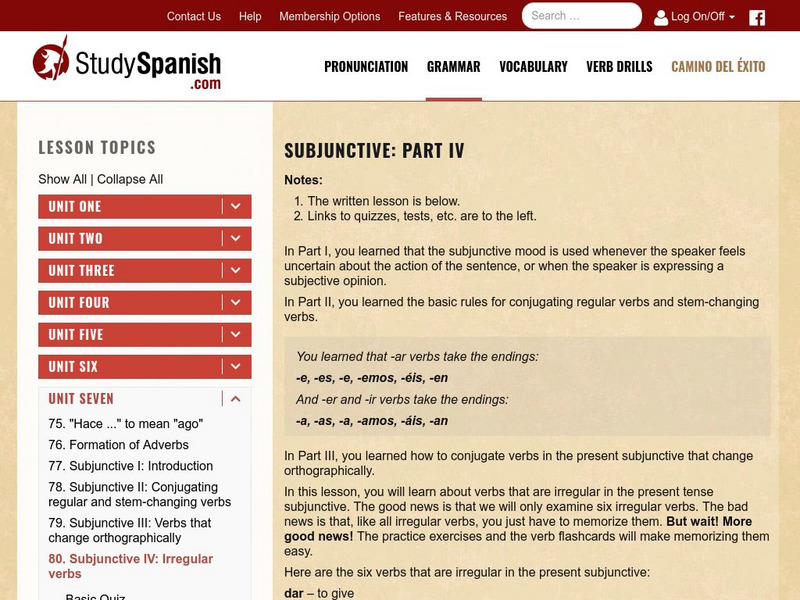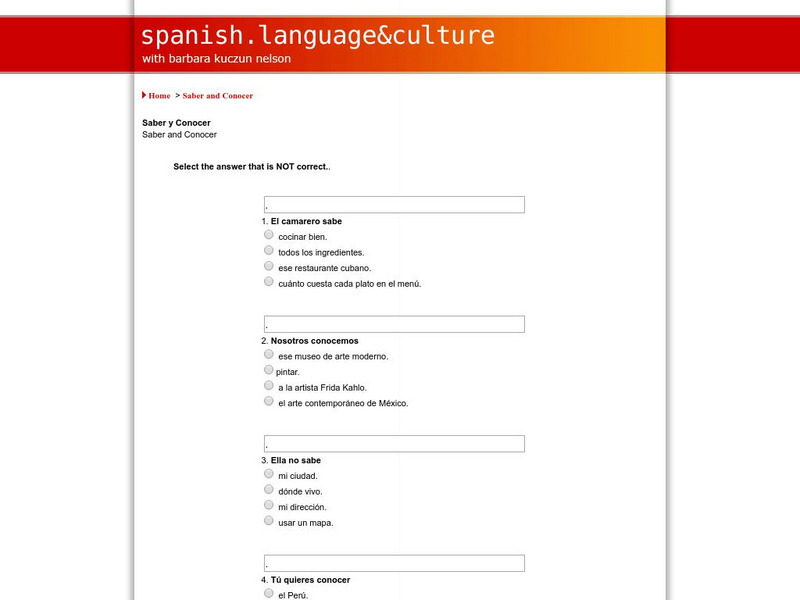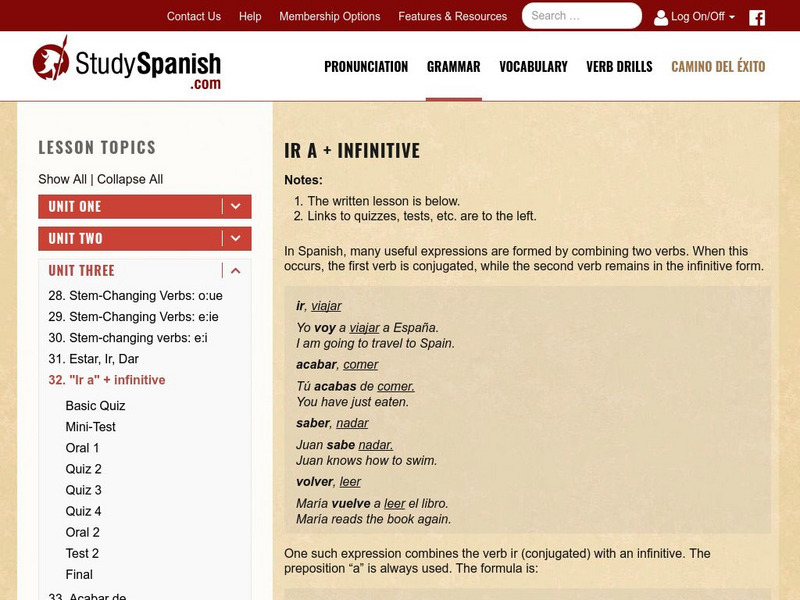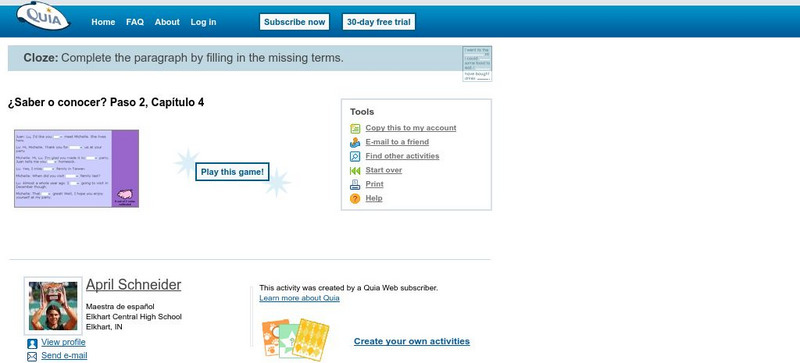Curated OER
Saber
Use this PowerPoint quiz, along with others found on our website, to supplement your lessons on Spanish verbs. This presentation focuses on the verb saber. It includes nineteen fill-in-the-blank sentences for your students to complete.
Curated OER
Do You know Saber and Conocer?
Ser and estar aren't the only Spanish words that have a similar meaning. Saber and conocer do too! This worksheet details the slight difference in meaning, organizes the information in two simple charts, and contains fifteen...
Curated OER
Using Saber and Conocer
What is the difference between saber and conocer? Language learners sometimes have difficulty with these words because of their similar meaning. Clear up confusion with the information and presentation included here. The website and...
Curated OER
Prueba-Saber and Conocer
Quiz your novice Spanish language learners on the different forms of saber and conocer. Not only will they have to decide which verb belongs in each of the 10 sentences provided, but they have to conjugate it correctly, as well. If...
Curated OER
Saber vs. Conocer #1
What is the difference between the verb saber and conocer? Although they are similar, they are used differently. Test your language learners with this short exercise. They complete the provided dialogue by completing the incomplete...
Colby College
Spanish Language & Culture: Preterites Irregular Meanings
Practice using verbs that change their meaning in the preterite tense: conocer, saber, querer, tener, and poder. Complete translations from English to Spanish by choosing the correct form of a verb in the preterite or imperfect. Answers...
Colby College
Spanish Language & Culture: Saber and Conocer (Part 1)
Great exercise for practicing the use of "saber" and "conocer." Type in the appropriate form of either verb for each sentence. Clicking on the question mark will provide the correct answers.
Colby College
Spanish Language & Culture: Subjunctive Verbs of Emotion
With the English translation as a guide, the student completes the Spanish equivalent by conjugating the verb of emotion into the present indicative and the verb in the noun clause into the present subjunctive. Good practice for spelling...
Study Languages
Study Spanish: Preterite vs Imperfect Part Iii
This site is an introduction to verbs that change meaning according to which past tense is applied, preterite or imperfect. Examples in English and Spanish illustrate the change of meaning. A quiz at the end of the lesson tests the...
Study Languages
Study Spanish: Preterite vs Imperfect Review
Comprehensive review of the preterite and imperfect past tenses. Includes regular, irregular, and stem-changing conjugations. Rules for usage and time expressions in Spanish are listed. A quiz at the end of the lesson tests the student's...
Study Languages
Study Spanish: Saber vs Conocer / Pedir vs Preguntar
Great introduction to the use of "saber" and "conocer", "pedir" and "preguntar". The lesson is easy to understand, with ample examples. A short quiz, oral exercise and test at the end of the lesson checks the student's mastery of this...
Study Languages
Study Spanish: Subjunctive: Irregular Verbs
Great explanation of how to conjugate the six irregular verbs in the present subjunctive: dar, estar, haber, ir, saber, and ser. A quiz at the end of the lesson tests the student's mastery of irregular conjugations in the present...
Colby College
Spanish Language & Culture: Saber and Conocer (Part 2)
Nice interactive pop-up activity which evaluates a student's knowledge of saber and conocer. If you guess wrong, the pop-up answer tells you why.
Study Languages
Study Spanish: Formal Commands
Excellent explanation of formal commands in Spanish that use the pronouns "usted" and "ustedes." Stem-changers and irregulars are included in this lesson. Ample examples illustrate the formation and use of formal commands. A quiz at the...
Study Languages
Study Spanish: Ir a + Infinitive
Good introductory lesson to the use of "ir a" to indicate future events. A list of adverbs that denote future time periods may also prove useful. "Poder", "acabar de", and "volver a" are introduced as other double verb constructions. A...
Study Languages
Study Spanish: Preterite Part 6
Great lesson on some of the most common irregular verbs in the preterite tense that follow the same pattern for their endings: andar, estar, tener, caber, haber, poder, poner, saber, hacer, querer, and venir. A quiz at the end of the...
Quia
Quia: Saber O Conocer? Paso 2, Capitulo 4
There are two cloze activities on this site that students can play to check their understanding of the differences between SABER and CONOCER. The creator of this activity has done a wonderful job relating the context to student life.


















